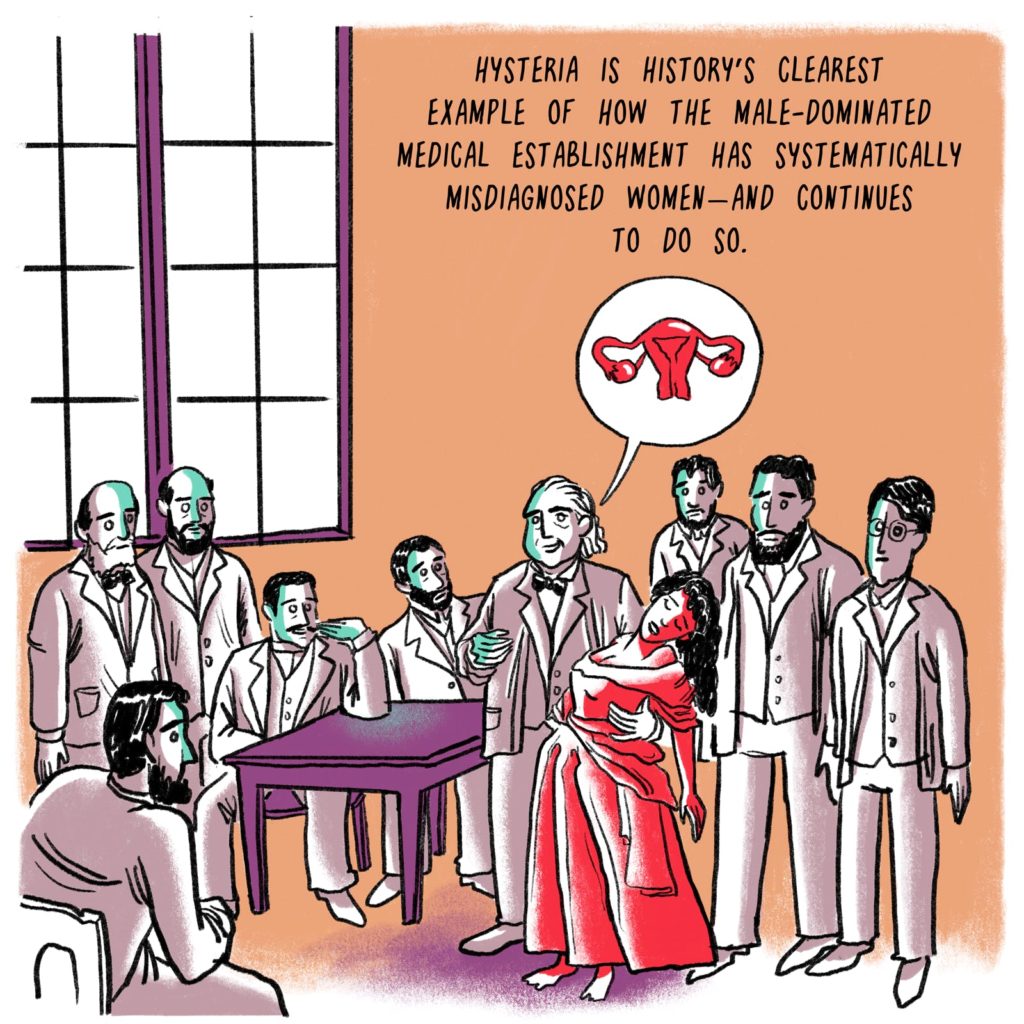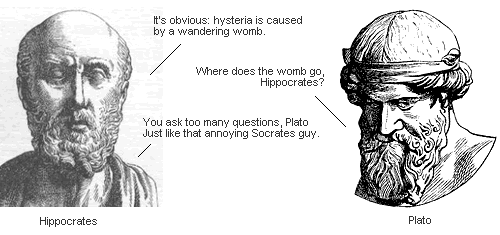The Tainted Past Between Hysteria & Women
What is hysteria? What is its colored past exactly like? How did mankind even come to this particular diagnosis of all?
It doesn’t matter whether you are well-versed with psychology terminology or the latest version of the ICD, chances are that you have read/heard about the controversial past that hysteria has through interactive social media posts, fun history facts, or YouTube videos.
To grasp the concept of hysteria as a ‘mental illness’, let’s take a look at its origin stories and what it meant back in the day:
In ancient Greece, it was believed that the woman’s womb tends to wander throughout the body, into different locations which subsequently results in madness. Hence, the term hysteria means womb and hysterikos means ‘of the womb’. Another preconception of the time was that hysteria stemmed or is rooted in sexual frustration in women.
And last but not the least, a popular pop culture fact that we might have read is that in the 19th century, women who were ‘diagnosed’ with hysteria were often ‘treated’ with the help of vibrators by the doctors.
All these simple and harmless facts paint a not-so-simple picture of misogyny, objectification, prejudice, and unnecessary confusion. Taking into account the treatment of women in the past decades as well as to this day, we know that women have been at the receiving end of many things that they do not understand or ask for.
And the acknowledgment and half-hearted acceptance of such a diagnosis allowed it to become the scapegoat for ailments ranging as wide and diverse as infertility to epilepsy to PTSD and even menopause. Such a diagnosis has colored the opinion about the continuity of a woman’s sexuality and the control she has over her own mind and body.
The first-ever recorded person to diagnose hysteria was the renowned Greek doctor Hippocrates and described hysteria as the suffocation of the womb since the womb was believed to be mobile and it could elicit and differing symptoms depending on its trapped location on the body.
A simple ‘cure’ was decided upon and that was to rub the woman’s head with the oil of lilies and to subsequently massage it. Celsus, the Greek philosopher, decided that bloodletting or cupping followed up with the application of warm and moist plasters to the genital area would help reduce the symptoms of hysteria.
All of these ‘remedies’ are meant to help with the discomfort and pain brought on by hysteria, non-existent menstruation cramps, and the setbacks of being a woman.
A sliver of sensibility saw itself through even though the idea of a suffocating womb persisted for decades. As the era of Enlightenment or the Era of Reason began, so did a new and fresh discourse around the anatomical functions of humans. Even though there was progress towards understanding the human body, the human, especially the female mind, remained an enigma.
Dr. George Cheyne, a Newtonian physician and Behemnist, was concerned about separating the English from their enemies such as the Germans, French, and the Spanish by concluding that the English only has melancholy, nervousness, and anxiety, but not syphilis. Dr. Cheyne also announced that only intelligent people could be diagnosed with hysteria. He said and we quote: “Fools, weak or stupid Persons… are seldom troubled with Vapours or Lowness of Spirits.”
He became the first person to call the ailment a ‘nervous illness’, implying that it is linked to the functioning of the brain and subsequently our motor capabilities, which were solidified by dissections during the Enlightenment period. Hence, women were diagnosed with the vapors, and men were diagnosed with the “wandering” spleen; the whole thing was called “sensibility”.

To solve this new stack of issues, preconceptions, and symptoms, there had to be a new solution. During the late 18th century, Anton Mesmer, a German physician with a knack for astronomy, declared that he has found the remedy for the aristocrats suffering from this ailment and came up with mesmerism, his innovative brand of animal magnetism.
Animal magnetism was concerned with the energy that flowed throughout the nervous system and how the power of this ever-flowing energy could be transferred or used on others to heal. And, there were many ways to work with this energy.
During a Mesmer banquet, yes you read that right, people would be urged to grab onto metal rods that would be ever so slightly charged by animal magnetism, leading to a pulsating flow of electricity that would cure the nervous illness. Eventually, people started doubting whether it actually worked or whether it was a ruse for something more personal and perverted.
Silas Weir Mitchell developed the “rest cure” as a therapy for hysteria in the mid-nineteenth century. Mitchell thought that hysteria was produced by overstimulation of the mind, which women were unable to bear due to a lack of capacity. If a lady is ordered the rest cure, she will be confined to bed, force-fed rich, fatty meals, massages, and, in some circumstances, electro-shocked.
Because of two key factors: psychoanalysis and World War I, the severe misdiagnosis of hysteria declined in the late nineteenth and early twentieth century. Sigmund Freud’s psychoanalysis began with hysteria: Freud was Charcot’s student. Freud and Breuer were the first to claim that hysteria occurs in the mind and is not caused by the actual brain, neurological system, or body. Their book, ‘Studies on Hysteria,’ published in 1895, pioneered the talking cure as a way of treatment for people suffering from attacks of hysteria.
Shortly after, World War I produced thousands of more men suffering from the same hysterical symptoms; this time, it was referred to as “war neurosis” or “shell shock.” By the conclusion of the war, the British army alone had claimed 80,000 instances of shell shock. Because the sufferers of this type of hysteria were mostly men, treatment options ranged from electro-convulsive therapy to abstinence.
The study of emotional trauma and its physical consequences became a significant topic of attention.

So, just what is hysteria? What is the best way to characterize it? It is mental instability, anger, and anxiety, all of which can occur naturally as a result of living in a traumatized society. Hysteria was eliminated from medical literature as a separate condition in 1980, although it has remained a sign of disease caused by specific trauma, both physical and mental.
Although it is today recognized as a symptom or outcome of another condition it has marked women for centuries: their explosive behavior, their need to be physically controlled, and their poor mental constitution. Although hysteria tales are fantastical, their true history illustrates not just how it has been used to control women’s behavior and bodies, but also the horrifying neglect mental trauma has received for far too many years.
Written by Riya Singh
